13 Neurotransmitter Clearance
Casey Henley
After neurotransmitters have been released into the synaptic cleft, they act upon postsynaptic receptors, as covered in the previous chapters. That action must be terminated in order for proper neuronal communication to continue. This is accomplished mainly through two processes: neurotransmitter transport and/or degradation. Transport physically removes the neurotransmitter molecule from the synaptic cleft. Degradation breaks down the neurotransmitter molecule by enzyme activity.
Neurotransmitters can be degraded by enzymes in the synapse
Acetylcholine
Acetylcholine action is terminated by acetylcholinesterase, an enzyme present in the synaptic cleft. Acetylcholinesterase degrades acetylcholine into choline and acetate molecules. Choline is then transported back into the presynaptic terminal and used in the synthesis of new acetylcholine.
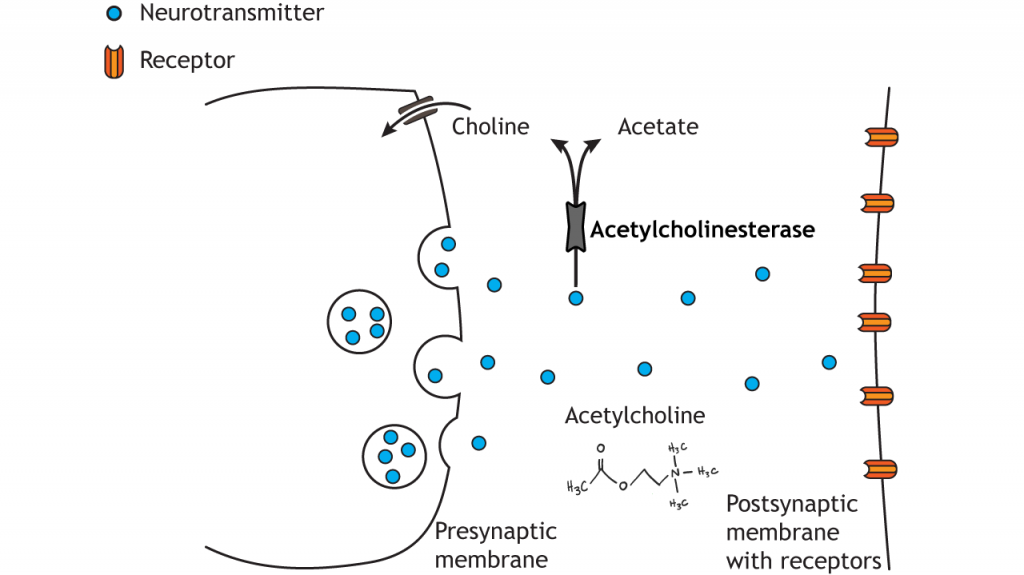
Neurotransmitters can be transported into glial cells and degraded by enzymes
Glutamate
Glutamate action is terminated by two mechanisms. Reuptake of glutamate molecules into the presynaptic terminal can occur, or glutamate can be transported into nearby glial cells. The excitatory amino acid transporters are sodium co-transporters and use the sodium electrochemical gradient to drive neurotransmitter transport. Within glial cells, glutamate is converted into glutamine by glutamine synthetase. Glutamine is then transported out of the glial cell and back into the presynaptic terminal for use in future glutamate synthesis. If glutamate is transported back into the presynaptic terminal, it can be repackaged in synaptic vesicles.

GABA and Glycine
Like glutamate, GABA and glycine action are terminated by either reuptake into the presynaptic terminal and packaging in synaptic vesicles or through transport into glial cells where breakdown can occur. The GABA and glycine transporter also use the sodium electrochemical gradient to drive the movement of the transmitter across the membrane.
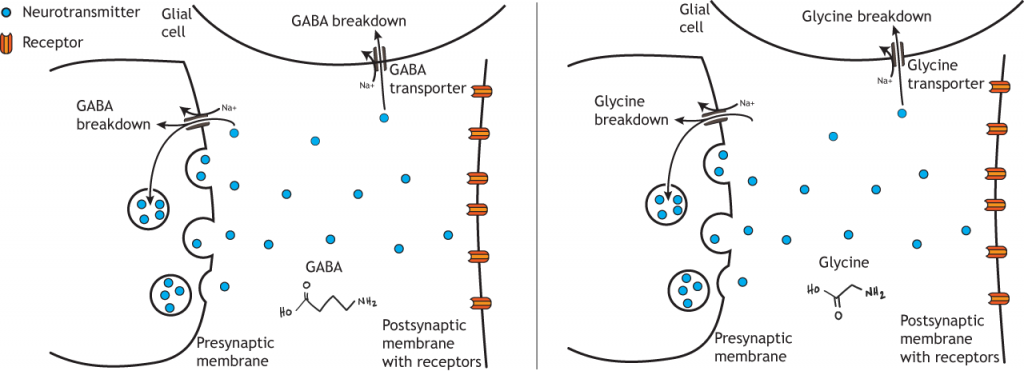
Neurotransmitters can be transported back into the terminal and either degraded or repackaged
Dopamine
Dopamine action is terminated by reuptake into the presynaptic terminal via the dopamine transporter (DAT). Once inside the cell, dopamine is either degraded via the actions of either monoamine oxidase (MAO) or catechol-O-methyltransferase (COMT), or it is repackaged into vesicles.
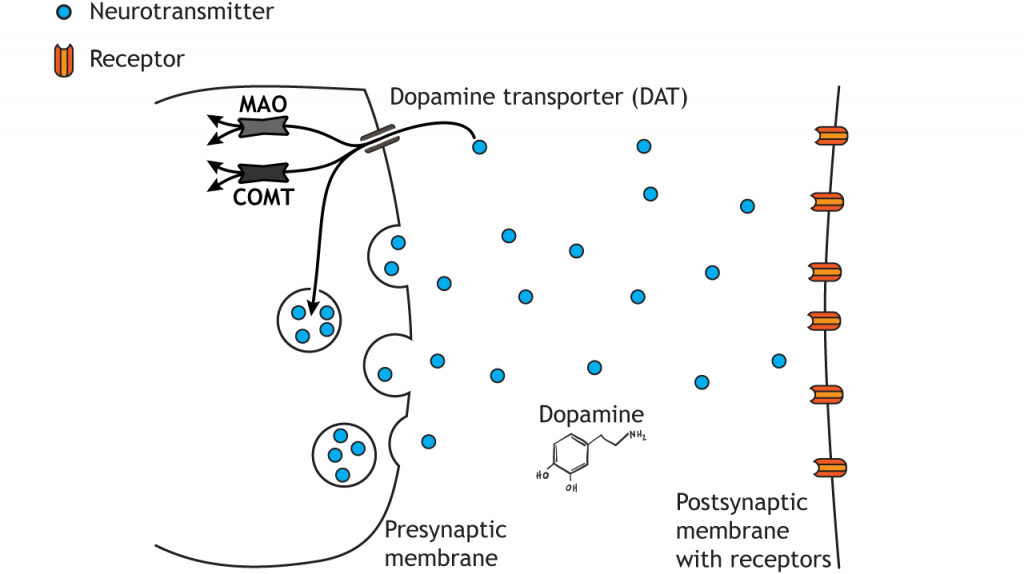
Norepinephrine
Norepinephrine follows the same pathway as dopamine. Reuptake into the presynaptic terminal occurs via the norepinephrine transporter (NET), and then the transmitter is either degraded within the cell by MAO or COMT or repackaged into synaptic vesicles.
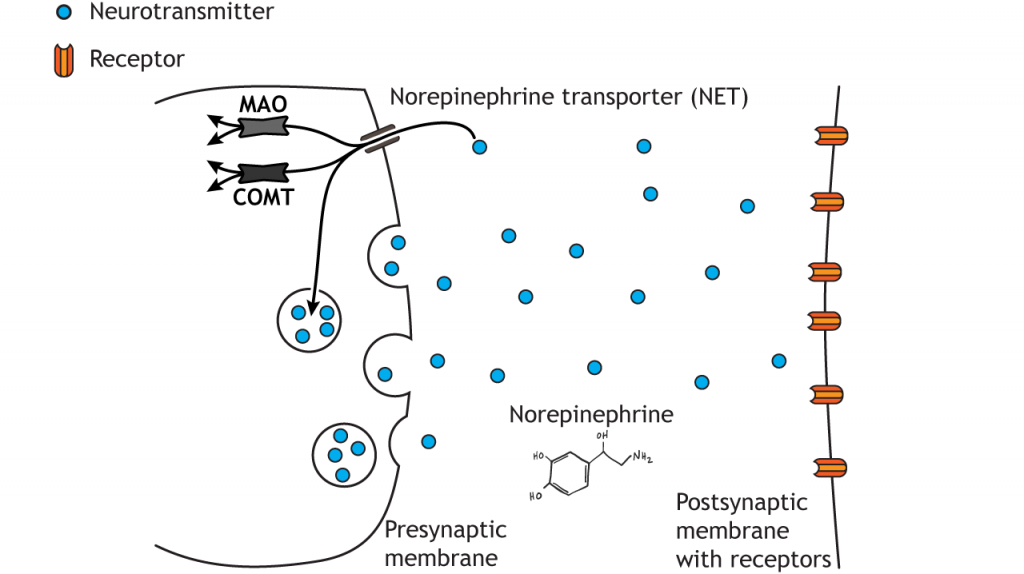
Serotonin
Like the other monoamines, serotonin is transported back into the presynaptic terminal via the serotonin transporter (SERT). The difference between serotonin and the catecholamines dopamine and norepinephrine is that monoamine oxidase is the only enzyme used for degradation.
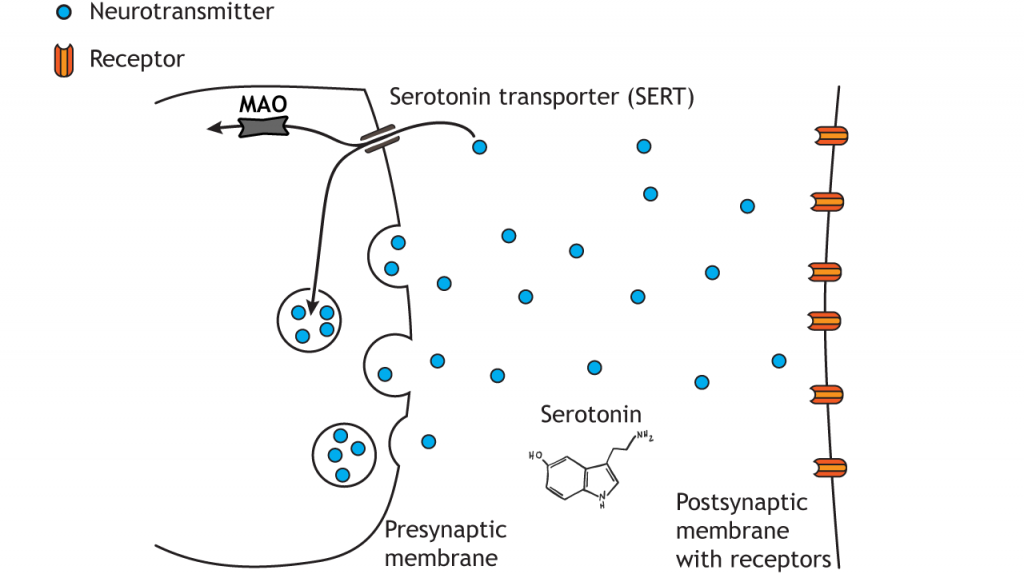
Conclusion
Effective neurotransmitter termination ensures precise and regulated neural communication. By recycling or breaking down neurotransmitters, the synapse is prepared for subsequent signaling, maintaining the dynamic balance critical for nervous system function.
Key Takeaways
- Neurotransmitter action in the synapse must be terminated
- This occurs by either
- reuptake into the presynaptic terminal where enzymatic degradation or repackaging into vesicles occurs
- transport into glial cells where enzymatic degradation occurs
- enzymatic degradation in the synapse
Test Yourself!
Try the quiz more than once to get different questions!

